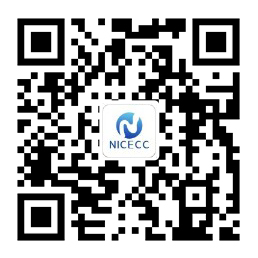In order to ensure the safety of products, different regions have formulated safety standards in order to implement strict testing and production process control at different stages of product production. Among them, the European standard should be considered as a relatively wide range of applications. Any product that goes to Europe will inevitably go through the rigorous testing of EN71 standard, and toys are no exception. The most commonly used ones are Torque&Tension, DropTest, ImpactTest, and compressionTest.
Toys are designed for children under the age of 14 or products for their play. Due to defects in the design of certain toys, the use of materials containing toxic substances and other unsafe factors, many countries in the world have successively formulated corresponding toy safety standards. Toys are subject to inspection and conform to the standard, the product is marked with a mark, otherwise it is not allowed to produce, sell and import.
Service area:
Wooden toys, metal toys
Velvet toys, plastic toys
Paper toys, electric toys
service items:
Physical and mechanical performance test, flammability test
Electromagnetic compatibility certification, wireless remote control toy certification
Electric toy test, heavy metal chemical toxic elements (heavy metal migration, dissolution and content test)
Filler cleanliness test (visual inspection, chemical method), chemical organic content (plasticizer, flame retardant, azo dye, polycyclic aromatic hydrocarbons, etc.)
N-nitrosamines and N-nitroso substances release amount, volatile matter content,
MBT content in vulcanized rubber, antioxidant release in vulcanized rubber
Color fastness to water, color fastness to perspiration
Nickel release amount, colorant
Formaldehyde and bisphenol A release
other
Introduction of major toy standards around the world
International Organization for Standardization
ISO8124-1 Toy Safety-Part 1: Safety Requirements Related to Mechanical and Physical Properties
ISO8124-2 Toy Safety-Part 2: Flame Retardant
ISO8124-3 Toy Safety-Part 3: Transfer of certain elements
EU
2009/48/EC New EU Toy Directive
EN71-1 Safety of toys-Part 1: Physical and mechanical properties
EN71-2 Toy Safety-Part 2: Flame Retardance
EN71-3 Toy Safety-Part 3: Transfer of certain elements
EN71-4 Toy Safety-Part 4: Test Equipment for Chemistry and Related Activities
EN71-5 Toy Safety-Part 5: Chemical toys (except test equipment)
EN71-6 Toy Safety-Part 6: Graphical representation of age signs
EN71-7 finger paint
EN71-8 swings, slides and similar toys
EN71-9 organic chemical compounds
EN71-12 nitrosamines and nitrosamine compounds
REACH Annex 17 Total cadmium, phthalates, polycyclic aromatic hydrocarbons, etc.
REACH highly concerned substance SVHC
EN62115 electronic toys
United States
CPSC16CFRPart1000toEnd Federal Consumer Product Safety Act
ASTMF963 Toy Safety
ANSIZ315.1 Tricycle safety requirements
ANSI/UL696 electric toy safety
Federal Regulation 16CFR1303 Prohibition Clause on Lead Paint and Certain Consumer Products Containing Lead Paint
CPSIA Consumer Product Safety Improvement Act
US states pay close attention to the chemical substance CHCC
Australia New Zealand
AS/NZSISO8124.1 Toy Safety Part 1: Safety content related to mechanical and physical properties
AS/NZSISO8124.2 Toy Safety Part 2: Flame Retardance
AS/NZSISO8124.3 Toy Safety Part 3: Migration of specific elements
Brazil
NBRNM300.1 Mechanical and physical properties
NBRNM300.2 flame retardant performance
NBRNM300.3 Migration of specific elements
NBRNM300.6 electric toy safety
Canada
CCPSASOR/2011 Hazardous Products (Toys) Act
SOR/2010-273 Hazardous Products Containing Lead (Contact with Mouth) Regulations
SOR/2010-298 Phthalate Regulation
SOR/2005-109 Surface Coating Regulations
South Africa
SABSISO8124-1 Toy Safety-Part 1: Safety Requirements Related to Mechanical and Physical Properties
SABSISO8124-2 Toy Safety-Part 2: Flame Retardant
SABSISO8124-3 Toy Safety-Part 3: Transfer of certain elements
China
GB6675 National Toy Safety Technical Code
1. Basic safety regulations
2. Mechanical and physical properties
3. Flame retardant performance
4. Migration of specific elements
5.GB5296.5-2006, Instructions for Use of Consumer Products Part 5-Toys
6.GB19865 Electric toy safety
Hong Kong
Safety requirements for toys and children's products
Japanese toy safety
ST2016 Japan Toy Association Standard
Part 1: Physical and mechanical properties
Part 2: Flame retardant properties
Part 3: Chemical properties
Malaysia
MS ISO8124-1 Toy Safety-Part 1: Physical and Mechanical Properties
MS ISO8124-2 Toy Safety-Part 2: Flame Retardance
MS ISO8124-3 Toy Safety-Part 3: Migration of certain elements
MS 1774 Toy Safety-Part 4: Test Equipment for Chemistry and Related Activities
MS 1774 Toy Safety-Part 5: Chemical toy devices other than tests
MS 1725-Electric toy safety
Saudi Arabia
SSA765 playground equipment: Part 1: General safety requirements
SSA1063 Toys and general safety requirements
SSA1064 Test Method Part 1: Mechanical and Chemical Testing
SSA1065 Test Method Part 2: Flame Retardant
SSA1322 low power radio frequency device
Singapore
SS474PT.1 Toy Safety-Part 1: Physical and Mechanical Properties
SS474PT.2 Toy Safety-Part 2: Flame Retardance
SS474PT.3 Toy Safety-Part 3: Transfer of certain elements
SS474PT.4 Toy Safety-Part 4: Test Equipment for Chemistry and Related Activities
SS474PT.5 Toy Safety-Part 5: Chemical toys (except test equipment)
SS474PT.6 Toy Safety-Part 6: Graphical representation of age signs
Thailand
TIS685-2540Part1 Toy Safety-Part 1: General Requirements
TIS685-2540Part2 Toy Safety-Part 2: Packaging and Labeling
TIS685-2540Part3 Toy Safety-Part 3: Test Methods and Analysis










